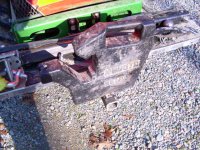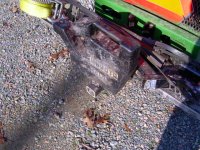RegL
Platinum Member
J_J said:On my 1445, there is a small block at the left rear that has two relief valves.
As far as testing, or adjusting, you can plug a gage in the circuit and adjust. You can do this by teeing in a gage, and try to lift an imoveable object, that way, you can see and hear when the relief valves are operatig. Before I put a hydraulic gage in my system, I was having trouble with the lift capacity , which was very low. PT told me to send them back to them, and they would check the relief pressure. I could have taken them to a local hydraulic shop for testing, Anyway, they tested OK. It turned out to be the lift pump, which I believe was leaking internally. A new lift pump fixed my problem.
Thanks JJ. I like the idea of installing a pressure gauge. I don't want to get greedy with the lift circuit but it would be nice to know that I'm getting every bit it was designed to do. And hope I'm Not being to dumb here, but do you mean left rear of pump or engine compartment?

